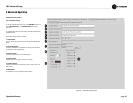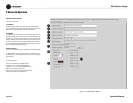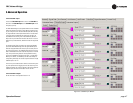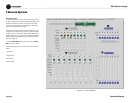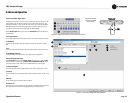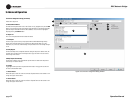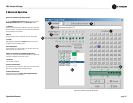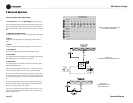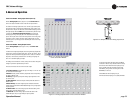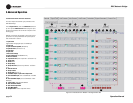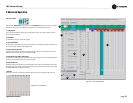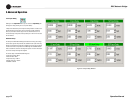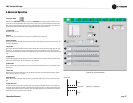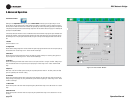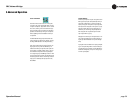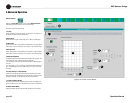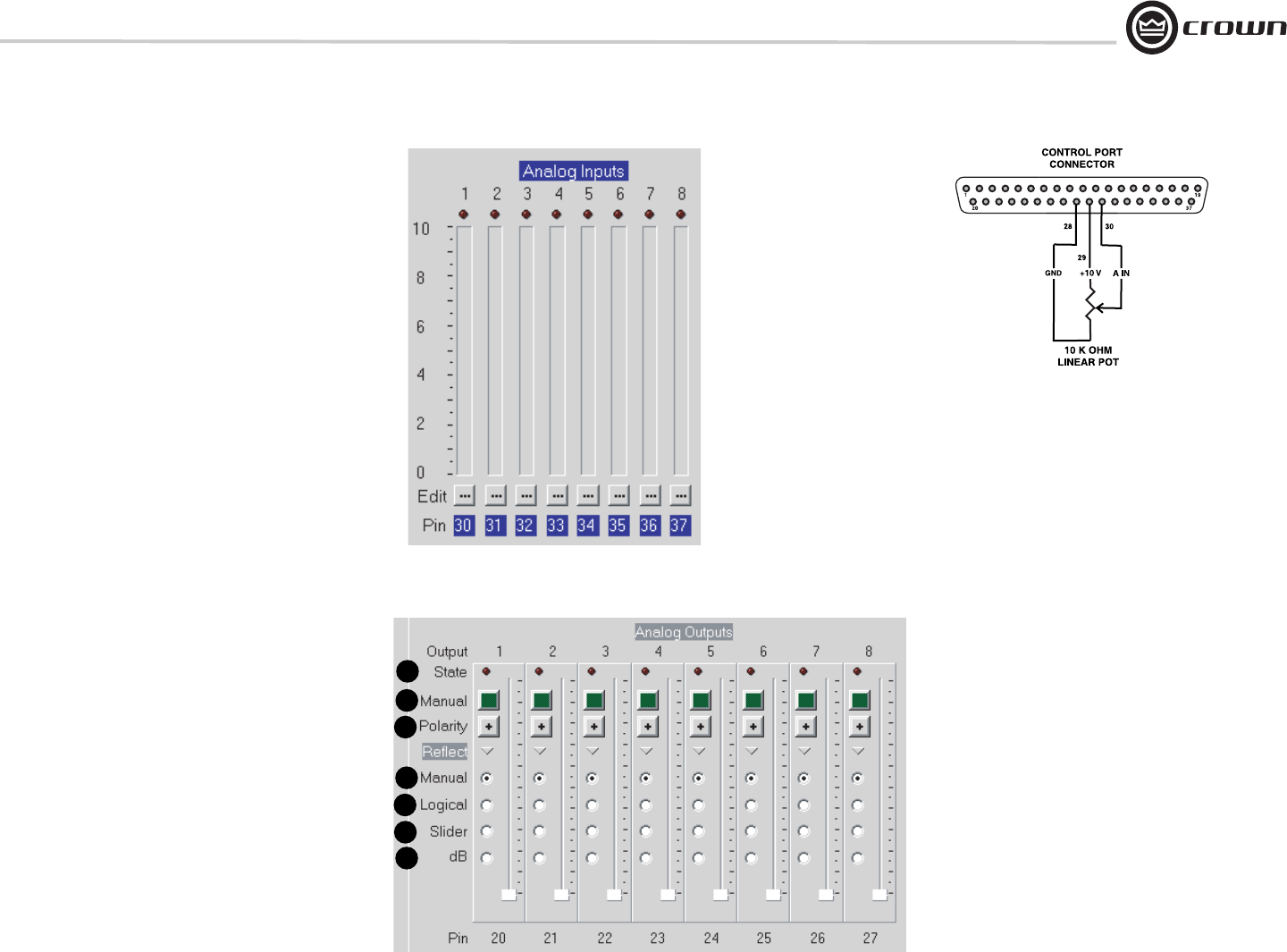
DBC Network Bridge
Operation Manual page 53
Control Port Window: Analog Inputs Section (AIN 1-8)
Find the Analog Inputs section (Figure 5.13) in the Control Port win-
dow. It has a status indicator and level meter for each input channel.
The Control Port analog inputs allow a 0 to +10 VDC signal to be input to
allow remote control of continuously variable objects such as faders or fil-
ter frequencies. They can also be used to control switched objects (just like
the Digital Inputs). When the Edit button associated with a particular input
is pressed, the Control Port Assignment Dialog box appears and
allows programming of the input just as was discussed for the Digital
Inputs. These inputs can be used to sense the presence of an analog input
signal level, such as ordinary 10 kilohm linear potentiometers for level
control (Figure 5.14). Analog inputs can alternately be set to sense simple
contact closure.
Control Port Window: Analog Outputs Section
Find the Analog Outputs section (Figure 5.15) in the Control Port
window.
In addition to the eight Digital Outputs, there are eight Analog Outputs that
can be used to provide an output voltage (0 to +10V DC for control). These
outputs can reflect a particular analog object such as a fader, or a switched
object and, can be used to provide drive for such things as lighting con-
trols or for a standard digital type output.
The settings are remembered in a Preset, so they can be used to change the
voltage of a particular output based upon Preset.
There are one indicator and six controls for each output.
1. Pin State Indicator: indicates the logical 'Pin-High' or 'Pin-Low' sta-
tus of the actual hardware output.
2. Manual: directly controls the binary output state of the corresponding
pin when in Manual mode.
3. Polarity: changes the polarity of the analog output regardless of the
pin control mode.
4. Reflect Manual: causes the output to directly reflect the state of its
Manual control.
5. Reflect Binary: causes the digital output to reflect the state of the
selected binary object within the DBC Network Bridge. Only a single object
may be specified.
6. Reflect Slider: causes the analog output to reflect the setting of the
slider control associated with the output.
7. Reflect dB: causes the analog output to reflect the status of the
selected dB object. Only a single dB object may be specified.
5 Advanced Operation
A screw-terminal board with barrier-block to DB37M
connections makes it easy to interface external circuitry
to the Control Port. Measurement Computing™ Corp.
offers a suitable screw-terminal board (part number
CIO-MINI37), along with an enclosure (part number
ENCMINI37) for this use.
Contact Measurement Computing Corp. at
www.measurementcomputing.com or (508) 946-5100.
Figure 5.14 Sample Control-Port Analog Input Circuit
1
2
3
4
5
6
7
Figure 5.13 Analog Inputs Section
of the Control-Port Window
Figure 5.15 Analog Outputs Section of the Control-Port Window



